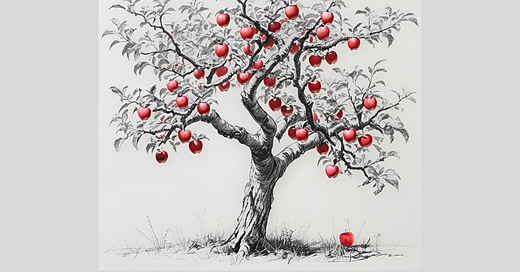Chapter 5: Gravity Is Not The Villain
While you're in space, you grow in height! Without the constant force of gravity on your spine, it stretches out, and you're actually taller when you land. It doesn't last long though. ~ Christina Ko
Dropped in mid-journey? Walk Straight is best experienced from the beginning.
In 2018, Scientific American reported that “Astronauts in space can grow up to 3 percent taller during the time spent living in microgravity.” That means a 6-foot-tall (1.8 meters) person could gain up to 2 inches (5 centimeters) while in orbit. However, the report went on to explain that the astronauts lost this added length within months of returning to Earth’s gravity. The focus was on the absence of gravity on the astronauts’ bodies in space, and its forces of compression on their bodies once back on Earth. But what wasn’t accounted for, what I see as a missing variable, was how much of this phenomenon stemmed not just from gravity’s impact, but also from the influence of the astronaut’s movement habits, posture, and exercise routines. We are taught that gravity weighs us down, but rarely, if ever, do we consider our role in the relationship.
Gravity can be the villain, compressing us into old age, or it can be an always-on-demand 24/7 opportunity to increase strength, flexibility, and musculoskeletal health. I have seen and experienced firsthand how reframing gravity can lead to increased “new” height and improved joint function well into mid-life and beyond. Time in space is not required. What if instead of being told to stand up straight, we were taught to hold ourselves in active resistance to gravity? Although it might sound abstract, the concept is quite literal. We learn in school that we are anchored to the ground by gravity’s force on our bodies toward the Earth. But even with all this pressure holding us to the ground, we rarely stop to consider what allows us to stay upright in the first place. Instead of marveling at the physics performance our bodies pull off every day, we take our anti-gravity superpowers for granted. It’s just one of those things our bodies do. Yet when we see someone in a handstand, anti-gravity strength becomes instantly obvious. Same muscles, different orientation.
In essence, the systems we use to lower ourselves to the floor are the same ones that lift us back up into a vertical position. Think of our muscles as having different gears: one for moving with gravity and the other for resisting it. When we bend over to touch the floor, the part of our body that remains vertical is working against gravity, offering opposition to the part of our body bending down to the floor into gravity’s flow. This may seem obvious in theory, but the importance comes with really wrapping our brains around that.
No matter what activity we are doing, static or in motion, gravity is always with us, like vertical raindrops of invisible force. Imagine three people sitting. One has an upright posture, the next is inclined forward, and the third is rounded and slumped. With the head directly above the torso on a long spine, body number one has the least amount of real estate for gravity’s droplets to land. As the spine inclines away from vertical, a larger surface area is exposed to gravity’s drizzle. With the head and shoulders rounded, body number three has the largest horizontal area for gravity’s impact and thus endures the most consistent downpour. This is where it gets interesting. Even though body number three appears the most vulnerable for negative repercussions, it is not what a shape looks like on the outside, but what is going on beneath the surface that actually determines the consequences. If the spine and head are actively resisting gravity, a “slumped” position is less detrimental to the spine and joints than an upright posture held through compression.
Gravity’s pressure depends on our position. Its impact depends on our response.
Leaning into your hip here, slumping there, you're just hanging in gravity. Squeezing when you lift? Bearing down or gripping to exert? Emphasizing movements with a little oomph to punctuate the endpoint? You’re doubling down on gravity’s compressive forces. How we inhabit our body affects how it experiences gravity, and how our body experiences gravity is reflected in the longevity of our spines and joints. Bone on bone sound familiar?
So this idea, using gravity as a partner rather than an enemy, is at the heart of something I’ve come to call Anti-Gravity Mode, or AGM. You won’t find it in training manuals or current cues; it’s not a metaphor or mindset. It’s a real, physical shift I’ve witnessed and refined. Innate systems of stabilization and mobility we’re wired to access, anywhere, anytime. It is the key to my growing almost an additional inch during the very years medicine says I should be shrinking. I’ll unpack it more fully later, but for now, consider this your first glimpse. Something to keep front of mind as we move through the stages of life, and upward through the body, in the chapters ahead.
Gravity is ever-present. We can ignore it, try to offset it, or meet it head-on and use it to our advantage. The choice isn’t whether gravity acts on us; it’s how we choose to meet it.
Where do you feel gravity most in your day-to-day? I’d love to hear! Drop a note in the comments! XxD
Sometimes, all it takes is a shift in perspective or a nugget of information considered in a new light to spark the ah-ha moment that changes everything!





I was listening to a story today about a 30 something woman who had terrible back pain that went away when she got pregnant only to return as soon as her child was born. Gravity too?